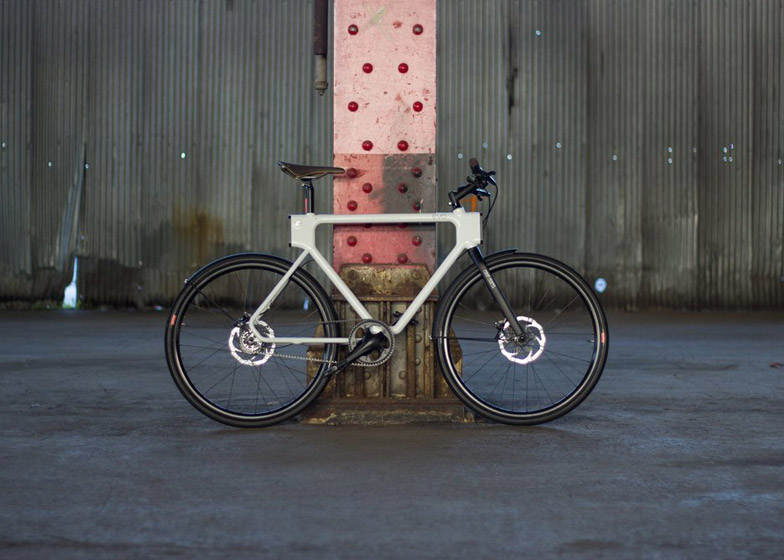This bicycle by a team of Californian designers features a frame with two symmetrical connection points, allowing cyclists to customise accessories attached to the front and back (+ slideshow).
The EVO Urban Utility Bike was designed with residents of San Francisco in mind, by a local team including industrial studio Huge Design, bicycle specialists 4130 Cycle Works and engineering agency PCH Lime Lab.
The collective came up with a bicycle that can be customised with various detachable accessories, including trays, saddle bags and child seats, that can all be clipped on and off the frame using a spring-loaded mechanism instead of being permanently bolted on.
"Current commuter bikes have bolt-on solutions for rack accessories making them more permanent," Huge Design partner Chris Harsacky told Dezeen.
"One thing we noticed is the amount of empty child seats that are on bikes around the city. Our frame allows the user to quickly change out an add-on without picking up a wrench."
A standard diamond-shaped bicycle frame has been manipulated to accommodate the connection elements at the front and back, forming one larger and one smaller triangle.
Intended to reference San Francisco's towers and bridges, the symmetrical frame is designed to support cargo loads at both ends.
Metal tubes are connected by 3D-printed steel lugs, which allow for quicker assembly than welding.
The front fork locks so the handlebars can be leant stably against a wall for loading and unloading.
Front and back lights, along with a cable lock, are integrated into the frame.
Hybrid tyres suitable for both road and off-road use are covered by mudguards.
"There are several trails within pedaling distance of San Francisco," said Harsacky. "We wanted this bike to be able to take advantage."
"The EVO Urban Utility Bike is the perfect example of designers coming to us with a concept, and together we engineered a solution – a bike that is not only beautiful aesthetically, but works to advance urban mobility within our community," added PCH Lime Lab co-founder Kurt Dammerman.
The bike was designed as part of creative platform Oregon Manifest's Bike Design Project, for which teams from five US regions were challenged with producing the "ultimate urban utility bike" for their city.
The five teams worked over six months to design, craft and fabricate prototypes, which will be judged by an online vote.
Other recent developments in bicycle design include a model that would quickly dismantle into parts to fit into a backpack and a smart bike that gives riders directions as well as providing alerts.













